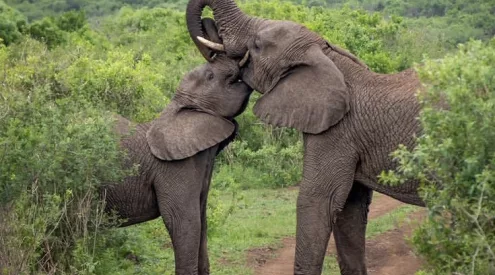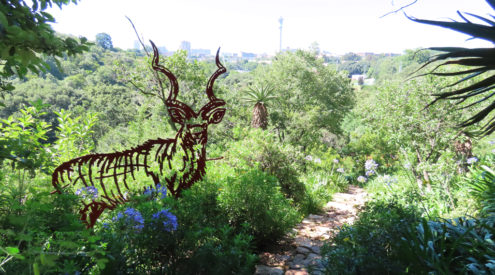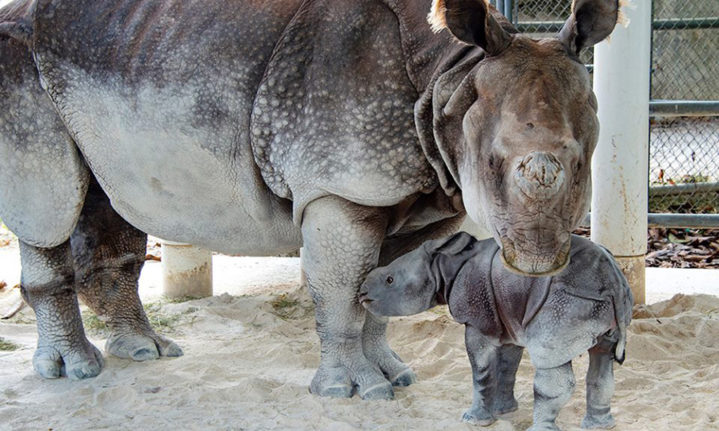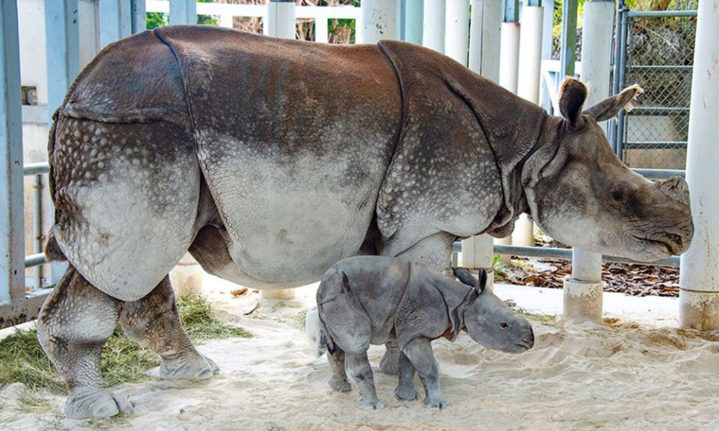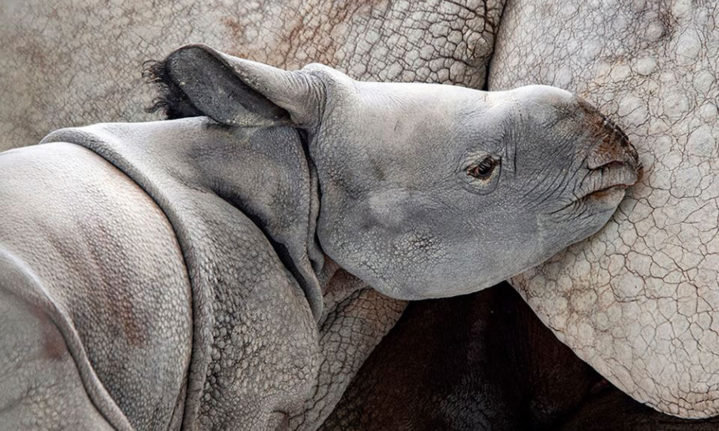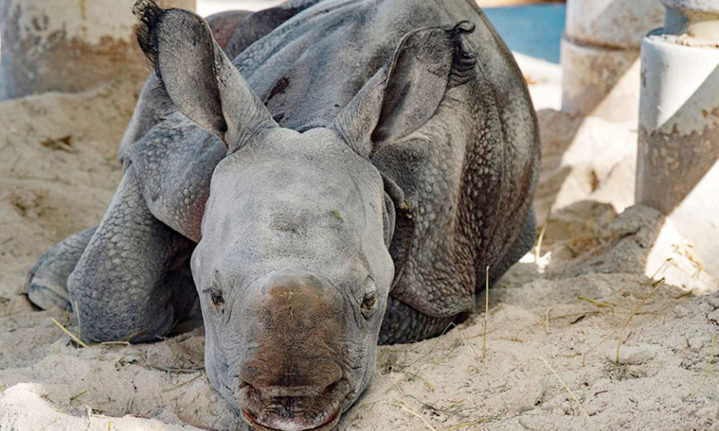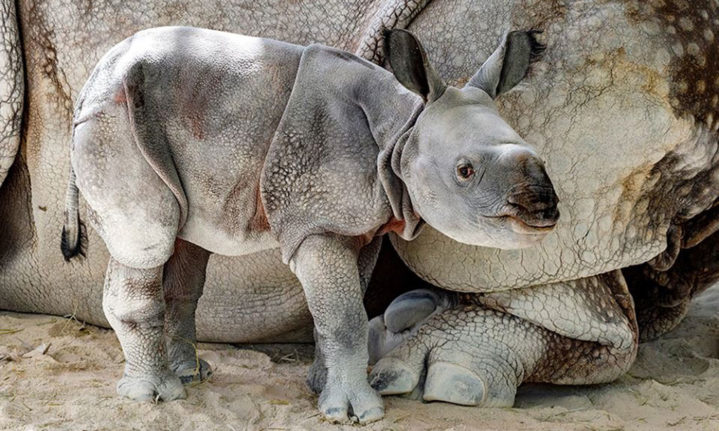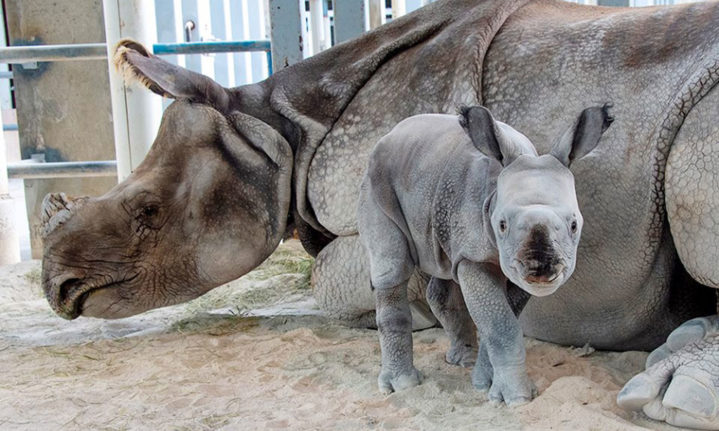For the first time, a greater one-horned Indian rhinoceros has been born as a result of artificial insemination.
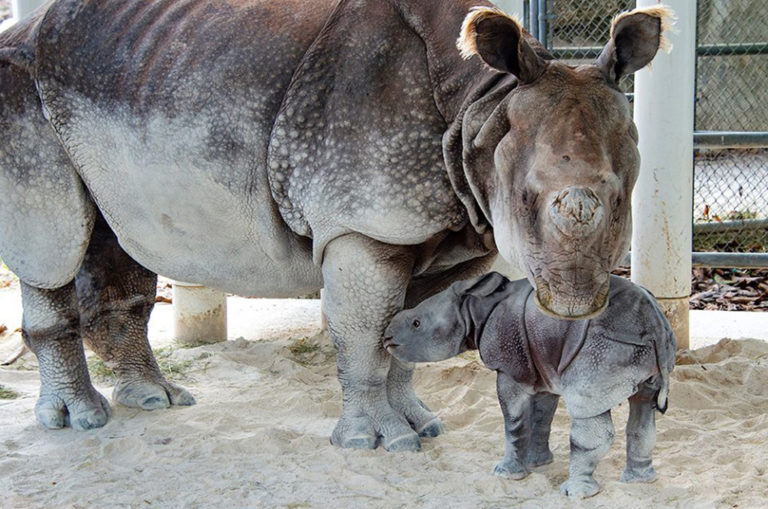
Akuti and her baby at Zoo Miami. Photo: Ron Magill.
There are only 3,000 of this species left in small protected areas of Nepal, India and Assam. They have been poached for their single horn, which is used in medicine and dagger handles, and the rhinos are now listed as ‘Vulnerable’ on the IUCN Red List.
After a 15-month pregnancy, the baby was born at Zoo Miami. Although the zoo has confirmed that the baby is healthy and doing well, the road to its birth was not always certain.
https://www.instagram.com/p/BwpOqgSnjwr/
Both parents were born at the San Diego Zoo Safari Park, but it was only in 2018 that they were once again reunited at Zoo Miami. Natural breeding proved unsuccessful, but artificial insemination resulted in a conception.
After the conception was confirmed, Akuti (the mother rhino) underwent ‘training’ to make her comfortable with ultrasound examinations so that zoo staff could keep a watchful eye on her and her baby.
For the few days leading up to the birth, Akuti was observed around the clock.
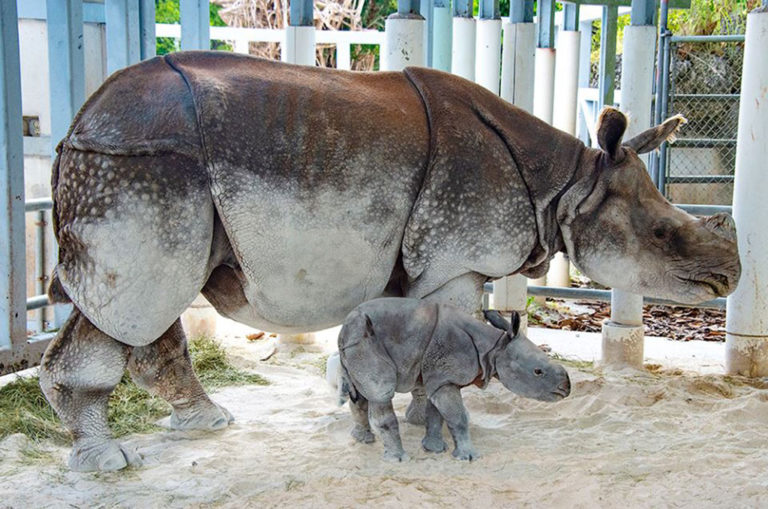
Indian one-horned rhinos can weigh as much as an SUV and their thick folds of skin help them to move more easily. Image: Ron Magill
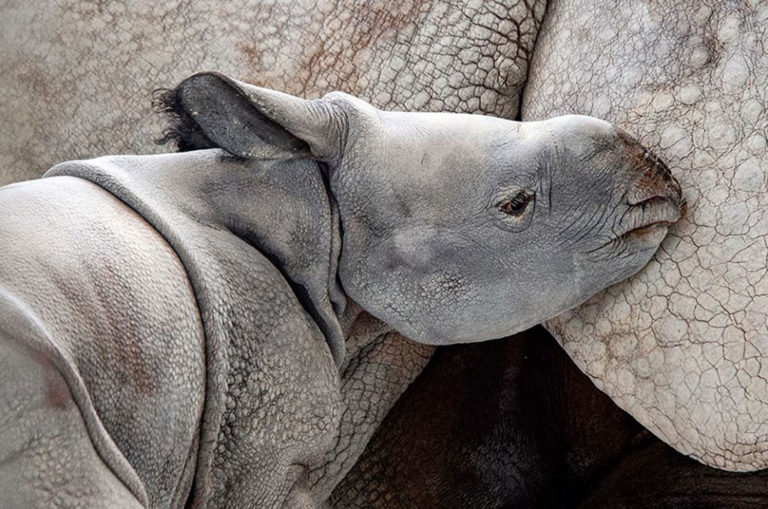
Baby rhinos tend to stay with their mother for two years. Image: Ron Magill.
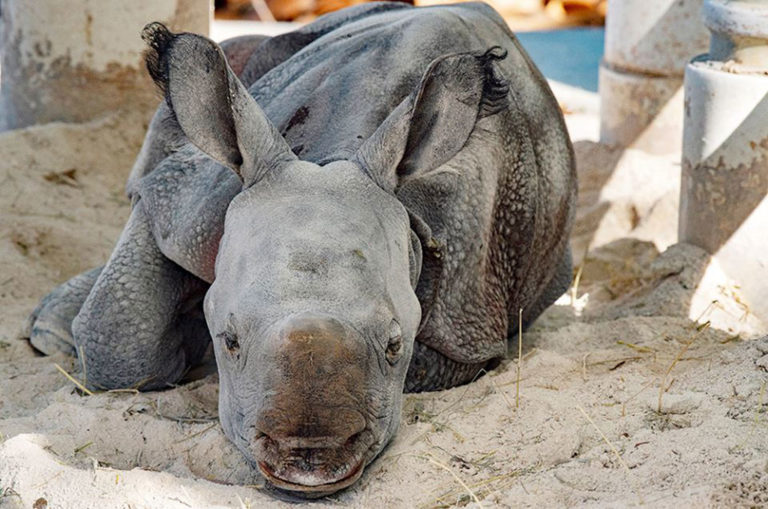
When the weather is good, these rhinos enjoy a swim. Image: Ron Magill
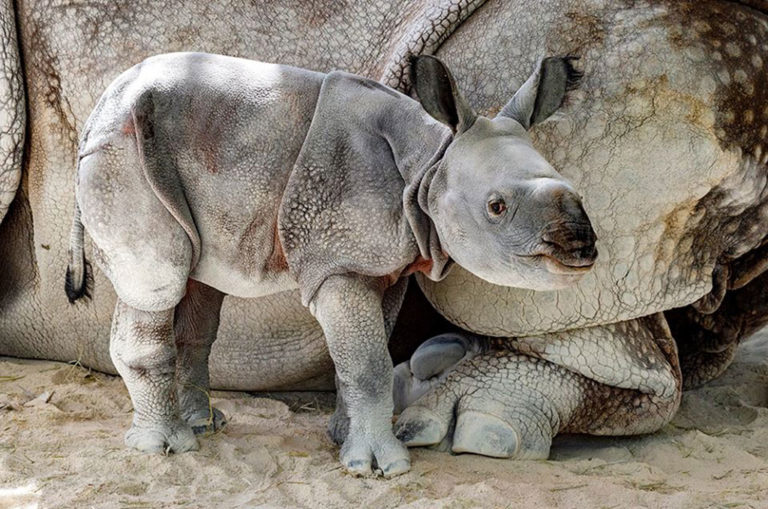
Indian one-horned rhinos can charge at up to 50km/hr and jump and change direction quickly. Image: Ron Magill
For now, the veterinary team and the public are all keeping their distance. The team will need to separate the baby from its mother for just a few minutes to conduct an examination, but they are hesitant to do this until the mother and baby have adjusted to their new lives. According to National Geographic, rhino babies stick close to their mothers for two years.
It will be a few weeks until the two can be visited by the public.
Feature image: Ron Magill



